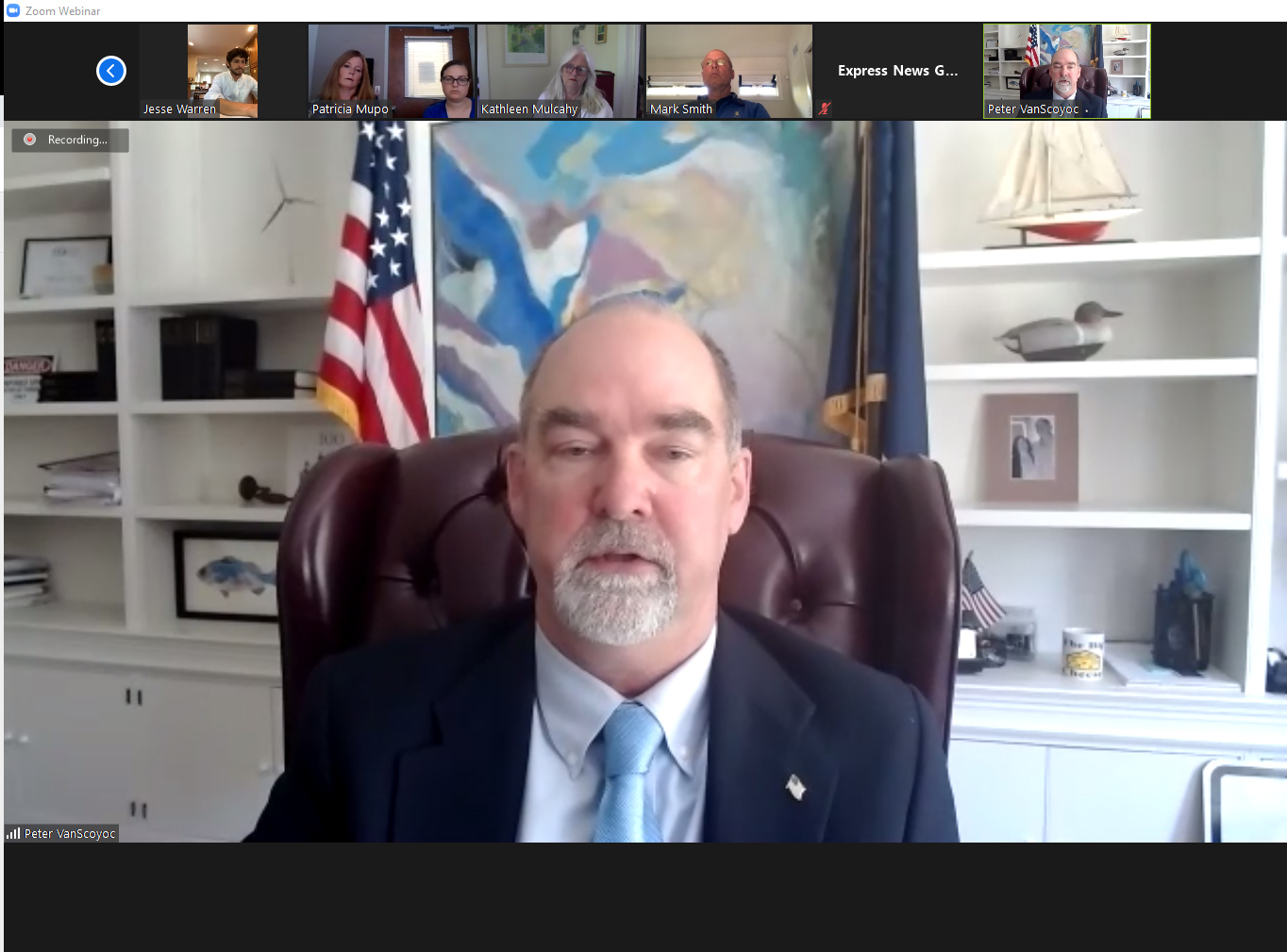
East Hampton Town Supervisor Peter Van Scoyoc says he will issue his findings this Friday on the validity of the petition to incorporate Wainscott into a village, following a second round of hearings on objections to the legal details of the petition.
Last Thursday, February 25, a smattering of opponents of the proposal to incorporate offered more reasons that they think the petition should be found invalid for not meeting various aspects of the state statutes that govern the creation of a new village.
Two Wainscott residents in particular, Sam Kramer and Doreen Niggles, raised the issue of the proposed boundaries of the would-be village laid out in the petition as failing to meet the state requirements of incorporation.
Mr. Kramer said that the law requires the boundaries of a proposed village to follow “existing streets and navigable waters.” But during Thursday’s virtual hearing via Zoom, Mr. Kramer told Mr. Van Scoyoc that the waters of Georgica Pond, and specifically Georgica Creek, Talmage Creek and the gut that is dug through the barrier beach twice per year to allow the pond to drain and exchange water with the sea, and are listed as boundaries of the new village, are not classified as navigable waterways.
“All of Georgica Pond is identified as tidal wetlands areas,” Mr. Kramer said. “In other words, the navigable waters that [the Citizens for the Preservation of Wainscott] identified in their petition are specifically not navigable waters. Therefore … the petition is legally deficient.”
Ms. Niggles, who has been among the most vocal opponents of the incorporation proposal, echoed Mr. Kramer’s points about the use of the pond and it’s gut as boundaries for the village. The gut, she noted, is only in existence for a few fleeting days a year and typically shifts locations slightly year-to-year. She also argued that the map of the proposed village boundary that was submitted with the petition was not actually a map, but a Google Maps image.
Ms. Niggles also said that there appear to be “erroneous” and “demonstrably false” statements about the inhabitants of the village and said that many of the signatures should be found invalid because the signers were not registered voters in the hamlet when they signed.
Others listed as “regular inhabitants” — there must be at least 500 regular inhabitants to meet state law —have moved away or died, she said.
Another resident, John Hall, said the incorporation effort was “undemocratic” because it excludes some residents of the current hamlet from having a vote in the incorporation should it come to a referendum even though their interests and property would be impacted.
At the first hearing, several residents raised concerns that property values would be hurt if the village took over permitting of the parking at Beach Lane and Townline Road and limited it to village residents only — excluding neighbors for whom the Wainscott beaches are the only access available west of Amagansett.
State guidelines require that Mr. Van Scoyoc issue his findings within 10 days of the hearings on the petition being closed. He said on Monday he would make his determination before the weekend.
“I am strictly focused on the requirements of the law,” he said. “If I find it is legally sufficient, I’ll do my duty. If anything at all is wrong with it, I have no leeway, and I’ll find it insufficient and we’ll go from there.”
If Mr. Van Scoyoc deems the petition valid, the town would have to call a referendum within 60 days at which only those registered to vote in Wainscott and living within the boundaries of the new village would be eligible to vote.